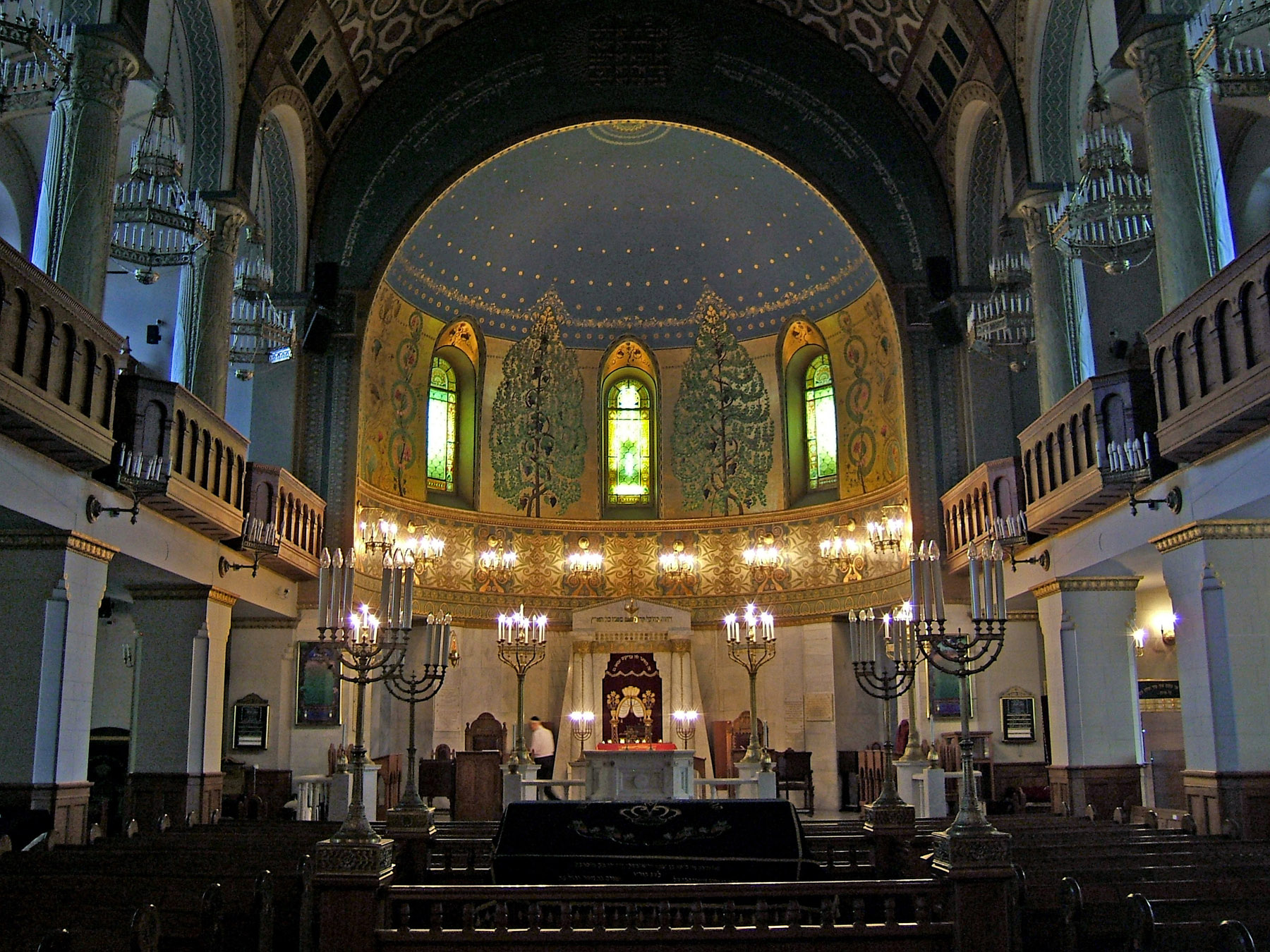
It is estimated that around 80,000 Jews now live in Moscow. Before 1905 this would have been unthinkable as Jews were legally barred from living in the city. Some exceptions would apply to individuals with skills or a trade that the city was short of and in these circumstances, the long established anti-semitic laws confining Jews to the Pale of Settlement in Poland, Latvia, Lithuania, the Ukraine and Belarus would sometimes be waived.
For almost the entire Soviet period, Jewish culture, religion and history was ruthlessly suppressed. Emigration was forbidden. Hebrew was forbidden. Support for Israel was looked on as being disloyal to the Soviet Union. Following the fall of the Communist regime, over one million Jews left the former Soviet Union to settle in Israel. Russian can be heard in all of Israel's major towns and cities and there are many businesses with both Russian and Hebrew signs in Haifa, Jerusalem and other cities.
A new Museum of Jewish History in Russia, funded privately, opened in 2011 in an office building close to the Dinamo Moscow stadium. I found out about the museum when browsing the internet and made an online appointment to view the collection. I thoroughly enjoyed the visit but finding the building and then gaining access was a bit of a challenge. I do not speak Russian. The security man looking after the whole building (not just the museum) spoke only Russian. He was not especially helpful and took the somewhat British approach to speaking to foreigners who don't understand - shout very loud and waive your arms a lot. Thankfully I was rescued by one of the museum staff who saw me and let me in.
Once inside, it soon became clear that the time and energy spent trying to find the museum and then to gain access was well worth the effort. I was shown around by a non-Jewish but extremely knowledgeable employee at the museum - Svetlana, who speaks much better Hebrew than I do and knows Yiddish too! The museum consists of a number of galleries showing different aspects of the Jewish experience in Russia, including religion, politics, everyday life in the shtetl compared to that in the city and also arts and cultural activities. The theatre gallery includes some wonderful playbills and photographs of the former Moscow State Yiddish Theatre (known as the GOSET) whilst overall, the collection consists of about 4,000 items. Svetlana advised me that many of them came from Moldova, Ukraine and other parts of the former Soviet Union.
In acknowledgement of the diversity of "Russian" Jewry, there is also a gallery that currently displays clothing, household and ritual implements and photographs recording the history and culture of Jews from Georgia, Azerbaijan and Bukhara. This was very interesting, especially as just a week previously, I had visited the entirely Jewish town of Krasnaya Sloboda in Azerbaijan and taken pictures of some of the places featured in this exhibition!
The museum is also making its presence felt more widely, contributing items to the current Chagall exhibition at the Tretyakov and also to the "To See and Remember" exhibition of Jewish religious objects at Moscow's Russian Library of Foreign Literature. I made it to the Chagall exhibition at the "old" Tretyakov in Lavrushinsky Lane. The exhibition marks the 125th anniversary of the artist's birth and is entitled "The Origins of the Master's Creative Language", setting his work in the context of his Judaism, early life in Vitebsk (now in Belarus) and experiences as a young artist in Paris. The exhibition includes paintings, graphics, drawings and personal items belonging to Chagall. The signage is in Russian only, and there does not appear to be a catalogue but it is well worth spending an hour here as a number of the works on display are from private collections with no regular access for the public.
I stayed at the Metropol Hotel whilst in Moscow (pictured below). It is a beautiful art nouveau/ style moderne building from the end of the 19th century which among other things features some fabulous external mosaic murals by Vrubel. The hotel also has an interesting Jewish connection. A suite of rooms formed the original Israeli Embassy in Russia following Israel's independence in 1948. The first ambassador was Golda Meyer. In Martin Gilbert's book "Israel, a history" the author tells how Golda recalled holding an open house every Friday evening in the hope that some of Russia's then 2.5 million Jews would drop in for cakes and tea. Journalist visited as did Jews and non-Jews from other embassies, but no Russians came and no Russian Jews came - out of fear of the regime, which steadfastly maintained there was no "Jewish problem" in Russia and which forbade emigration. We will come to how Golda eventually got to meet Moscow's Jews a little further on.
I visited three synagogues during the time I was one in Moscow. I had been to the Choral Synagogue (pictured below) before, back in 2008. This is a building with an interesting history. Before the 1905 revolution, the Tsarist authorities had forbidden the construction of synagogues inside the formerly enclosed Kitai-Gorod area of Moscow and so the Choral was built a short distance from its walls. Austrian architect, Semeon Eibschutz was appointed by Moscow's Jewish community in 1881but had his original plans rejected by the city authorities. His second attempt won approval in 1886 and construction began in May 1887 but the authorities ordered the removal of the completed dome and forbade the exterior image of the scrolls of Moses. Five years later, with the building still not complete, the city again intervened to prevent it opening and it was not until 1906 that the Synagogue eventually began to be used for its intended purpose. In the meantime, Eibschutz died in 1898 and architect Roman Klein was brought in to complete the works.
This was the only synagogue to operate throughout the entire Soviet period and was subject to constant surveillance and harassment from the authorities. People were photographed leaving the synagogue and often lost their jobs soon after. Like all religious authorities, the rabbi was required to complete reports for the state on who attended services, how they behaved and what they had said whilst there. To make matters worse, the state occupied parts of the building in both both 1923 and 1960 for non-religious purposes.
Golda Meyer pops up here again. In October 1948 she made an unauthorised visit to the synagogue for Rosh Hoshanah. Both Golda and the authorities were astounded that around 50,000 people turned up rather than the normal 2,000 at the high holy days, calling out "shalom" and "Golda". This was the most public display of Russian Jewish support for the newly restored State of Israel and she recalled being overwhelmed by the emotional response to her visit - women came to her in the women's gallery to look at her or touch her coat. She remembered being so emotional that she did not know what to say. Bundled into a car to help her extrapolate herself from the crowd, she wound down the window and said in Yiddish "A dank eich dos ibr sent geblieben Yidden ", which means "thank you for remaining Jews". Ten days later she returned to the synagogue for the Yom Kippur service to a reception from another vast crowd. She later recalled that when the rabbi recited the closing words of the service - next year in Jerusalem - "a tremor went through the entire synagogue". It would take a lot longer than one year for most of Russia's Jews to realise their dream of reaching Israel.
On my most recent visit to the Choral synagogue, the service was still progressing and I was unable to take photographs. I was most touched by the scenes inside the main prayer hall with a group of primarily (although not entirely), older men gathered around the bimah to witness the reading of the Torah and waiting to be called up to read themselves.
Eibschutz designed a synagogue that at least from the outside resembled a cathedral. The building is large and imposing, but apart from the Magen Dovid on the dome, it could easily be taken for a church. Despite its size, the building is easily missed from the end of the street and in order to fully appreciate its size and to see the Magen Dovid, one must stand well back on the opposite side of the road - occupying ground formerly frequented by the KGB. The interior is exquisite. The main prayer hall has an extremely beautiful cupola with strong blues and greens and which depicts trees and floral motifs. The synagogue is Ashkenazi and Orthodox but also houses smaller prayer halls for Georgian, Sephardi and Bukharan Jews who follow different traditions.
There are also two Lubavitcher synagogues in the city, both of which I visited. Both have an impressive network of services for their congregations, including various kinds of advice, Hebrew classes, health activity and other support in addition to ministering for the religious wellbeing of the community. The Bronnaya synagogue Agudas Chasidei Chabad (see below) is housed in a striking structure where an older building has been encased in a glass atrium and new towers built with a dominating menorah showing on the exterior. This synagogue once had a theatre as a neighbour. Solomon Mikhoels, the genius and star of the Moscow Yiddish Theatre was linked to it. A convinced atheist and devoted communist, Mikhoels is believed to have been happy when the authorities closed the synagogue in the 1930's. Unfortunately, he was also to fall foul of the regime and to die in suspicious circumstances.
Before we leave the synagogues, a word about security. Moscow's synagogues have fairly heavy duty security in response to a series of attacks over a number of years - some fatal. I fully understand and support the need for this type of security but got the feeling that some of these men had watched too many Hollywood movies - check the suits, hairstyles and the severely snarly attitude. I am reliably informed that Russia's burgeoning security industry is largely led by former KGB men and that this was deliberately encouraged and developed in order to prevent them drifting into organised crime.
The aforementioned Solomon Mikhoels was one of Russian Jewry's most interesting and talented characters. Born in what is now Latvia in 1890, he had a stellar career in the theatre before becoming artistic director of the Moscow State Jewish Theatre in 1928. He shone in a range of roles including Tevye the Milkman in Sholem Aleichem's play of the same name, as Jewish heroical historical figure Bar Kochba and most famously of all as King Lear in the Yiddish version of Shakespeare's play.
Although Mikhoels was without doubt a major star in the Yiddish Theatre, it is important to note that he was one of many hugely important actors, artists, musicians and designers connected with the company. Chagall, Nathan Altman, Robert Falk Aleksander Tyshler and Isaac Rabinovich all designed scenery and or playbills and programmes for the theatre. Joseph Achron composed music for the theatre. Isaac Babel wrote screenplays for films made by the theatre whilst the works of writers Isaac Leib Peretz, Sholem Asch, S An-sky and Sholem Aleichem were adapted for the theatre. Hannah Rovina, Benjamin Zuskin and Mikhoels were amongst the theatre's most accomplished actors - Rovina eventually leaving for Tel Aviv where she became the star of the emerging (and still thriving) national theatre there - Habima. The Moscow State Yiddish Theatre had probably the most astonishingly talented group of artists ever assembled in the Soviet Union. Sadly many of them felt obliged to flee the country, were executed or exiled during Stalin's terror that commenced in 1937 and continued in various forms until his death in 1953.
Mikhoels was a key player in the Jewish Anti-Fascist Committee, cynically established by Stalin during the second world war. Stalin made use of the actor during the war years, sending him to the USA to raise funds, ostensibly to assist and resettle Jews fleeing from German persecution further west. Mikhoels was very persuasive and is known to have raised millions of dollars for this cause. What is also known is that Stalin gratefully received the money but there is no record of any of it being spent on the purpose for which it was raised. Mikhoels was the most prominent member of the Committee. Whilst Stalin was happy to stage show trials for the other leading lights resulting in the execution of all but two of the Committee members, a show trial for Mikhoels could have been dangerous as he had been extremely close to Stalin. Rather conveniently, he was killed in January 1948 in a hit and run incident in Minsk. It is widely believed that the accident was staged on Stalin's orders. A plaque to Mikhoels (pictured below) can be seen on the facade of the theatre around the corner from the Bronnaya synagogue. His death precursed a significant shift in state policy to one of vigorous anti-semitism with staged trials, the coining of the phrase "rootless cosmopolitans" to describe Jews in order to avoid accusation of racial persecution and complete suppression of Jewish religious and cultural activity.
Aside from Mikhoels, the most famous of the Russian Jewish artists to perish as a result of Stalin's paranoia was probably the poet Osip Mandelstam. Another convinced communist, he became disillusioned with the Soviet Union, wrote a poem critical of Stalin, for which he served time in prison, was tortured and eventually exiled to the freezing far eastern region of Russia where he died of starvation. There is a plaque to Mandelstam on the external wall of the former Writer's Club in Moscow.
And what of today? Moscow is seen as the centre of Jewish life in Russia. Although the community is large compared to other cities in the country, it is tiny compared to the overall population as Moscow is a city of at least 12 million people. There is a revival of Jewish culture, evidenced by the development of the new museum, the themes of exhibitions held elsewhere in the city and the growing Lubavitcher presence in Moscow - all of this despite seven decades of Soviet persecution preceded by centuries of persecution under the previous regime. Svetlana, my guide at the museum told me that many people are rediscovering their Jewish roots or ancestry and that there is almost an element of "trendiness" in discovering a Jewish grandparent. That is an interesting idea, but I am unsure of how valuable or realistic such feelings are to the revival of Jewish culture and religion in this huge city. Witness the security measures felt necessary at the synagogues. Time will tell.
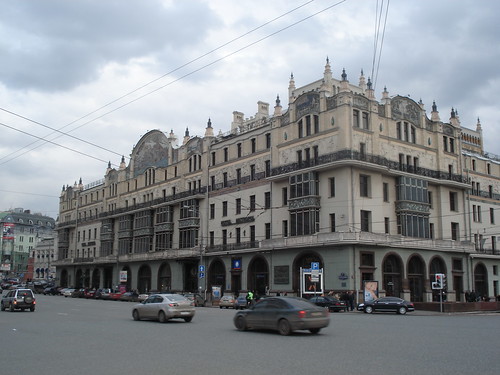
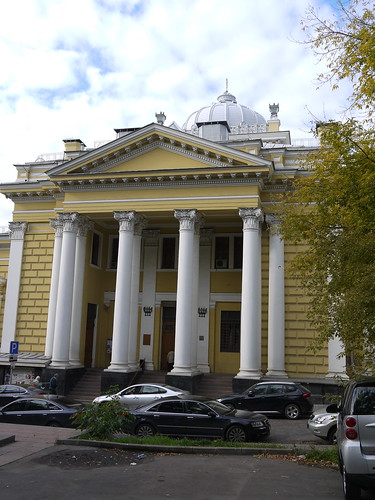
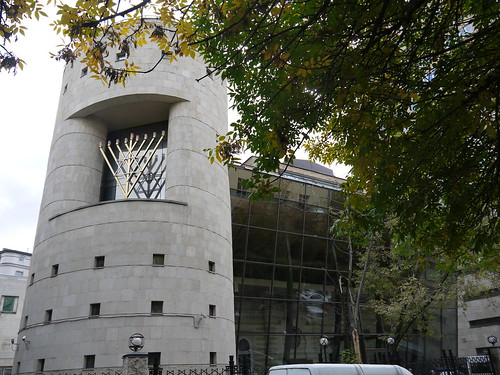
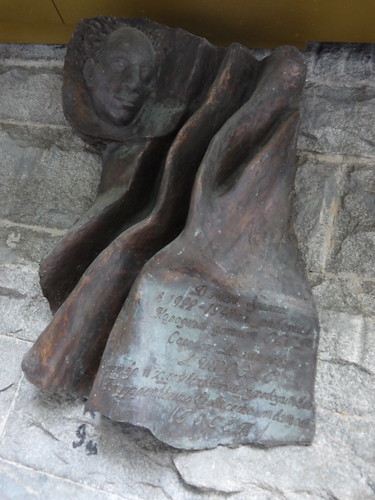
No comments:
Post a Comment